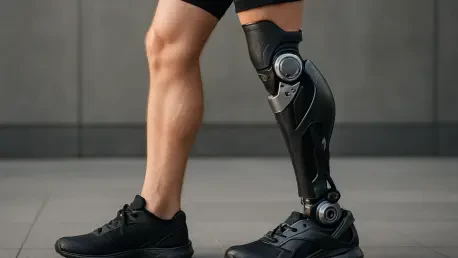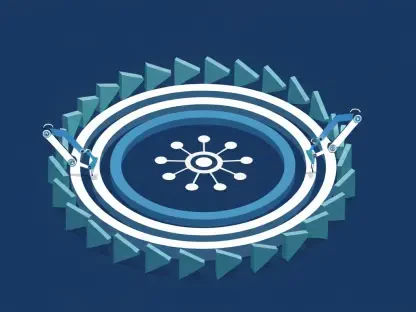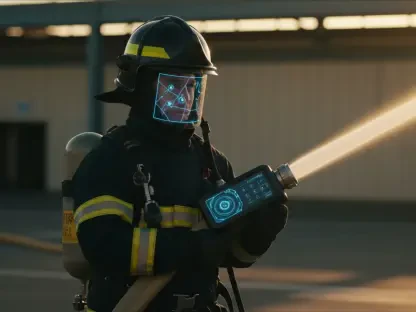I’m thrilled to sit down with Oscar Vail, a leading expert in technology with a deep passion for cutting-edge fields like quantum computing, robotics, and open-source innovation. With a career dedicated to pushing boundaries, Oscar has been instrumental in advancing prosthetic technology and rehabilitation robotics. Today, we’ll dive into his insights on the groundbreaking Omnia bionic leg, the importance of user-driven design, the challenges of pioneering new systems, and the inspiring journey of blending human experience with technological advancement.
Can you share the story behind the development of the Omnia bionic leg and what inspired your team to take on this challenge?
The Omnia bionic leg was born out of a desire to redefine what’s possible for individuals with transfemoral amputations. Our team saw a gap in prosthetic technology—many devices relied on commercial components that limited customization and innovation. We wanted to create something from the ground up that could truly adapt to a user’s needs. The inspiration came from real stories of resilience, like those of amputees striving to reclaim their active lifestyles. Coupling that with our expertise in robotics, we aimed to build a system that wasn’t just functional but transformative.
What sets the Omnia system apart from other prosthetic legs in terms of design and functionality?
What makes Omnia unique is its fully integrated design. The Unico knee and Armonico ankle are both motorized and communicate with each other through advanced sensors. This allows for real-time adjustments during different activities, whether it’s walking on flat ground or climbing stairs. The knee blends hydraulic and electric systems for smooth, energy-efficient movement, while the ankle uses a special mechanism to reduce impact and enhance stability. Unlike many other prosthetics, we built everything in-house, which gave us the freedom to fine-tune every detail for optimal performance.
How does the synergy between the Unico knee and Armonico ankle enhance the user experience?
The communication between the knee and ankle is a game-changer. They exchange data from built-in sensors to adjust things like stiffness and propulsion on the fly. For instance, when a user steps on a slope, the ankle adjusts its angle to prevent tripping, while the knee shifts to provide the right support. This teamwork mimics natural leg movement far better than isolated components can. It means users feel more confident and expend less energy, whether they’re navigating a balance beam or just walking around the house.
Can you explain the significance of building Omnia without commercial components and how that shaped the project?
Building Omnia without commercial parts was a deliberate choice to push innovation. Off-the-shelf components often come with limitations—they’re designed for general use, not specific needs. By developing everything ourselves, we could tailor every piece to work seamlessly together. It was a tougher path, no doubt, with longer design and testing phases, but it allowed us to create a system that’s uniquely adaptable. It also means we can keep iterating based on user feedback without being tied to external constraints.
How does the automatic switch between hydraulic and electric modes impact the daily life of someone using Omnia?
The automatic transition between hydraulic and electric modes is all about ease and efficiency. Hydraulic mode is great for level walking or descending—it’s quiet and conserves energy. Electric mode kicks in for more demanding tasks like climbing stairs or standing up, providing active power. This switch happens seamlessly thanks to our algorithms, so the user doesn’t have to think about it. In daily life, this means less mental and physical strain—they can focus on their day, not on managing their prosthesis.
What role does user feedback play in refining a system like Omnia, and can you share an example of how it led to a specific improvement?
User feedback is the heart of our design process. We believe technology should serve the person, not the other way around. Working closely with pilots like our lead tester, we’ve been able to make real changes based on their experiences. For example, early on, we got input that the propulsion during stair climbing felt uneven. That led us to adjust the software controlling the electric mode in the knee, fine-tuning how power is delivered. It’s these insights that turn a good device into a great one.
What were some of the biggest hurdles your team faced while developing Omnia, and how did you overcome them?
One of the biggest challenges was ensuring the knee and ankle could communicate effectively under all conditions. Early prototypes had delays in sensor feedback, which affected responsiveness. We spent months refining the algorithms and testing different sensor placements to get that real-time synergy. Another hurdle was balancing battery life with performance—users need a device that lasts all day. We optimized the energy systems and tested relentlessly to ensure durability. It was a grind, but seeing the results at events like Cybathlon made it worth it.
Looking at the broader impact, how do you think advancements like Omnia will shape the future of rehabilitation robotics?
I believe systems like Omnia are just the beginning. They’re paving the way for prosthetics that aren’t just replacements but true extensions of the human body. As we integrate more advanced sensors, AI, and machine learning, these devices will become even more intuitive, predicting a user’s intent before they even move. Beyond that, the focus on user-centered design will drive broader accessibility—making high-tech solutions available to more people, not just elite athletes. It’s about empowering everyone to live without limits.
What is your forecast for the future of prosthetic technology over the next decade?
I’m incredibly optimistic about where prosthetic tech is headed. Over the next ten years, I expect we’ll see devices that are fully integrated with the nervous system, allowing direct brain control for seamless movement. We’ll also see costs come down as materials and manufacturing processes improve, making advanced prosthetics more accessible globally. On top of that, I think community-driven innovation—through events like Cybathlon and open-source collaboration—will accelerate progress. It’s an exciting time, and I can’t wait to see how far we can push the boundaries.









